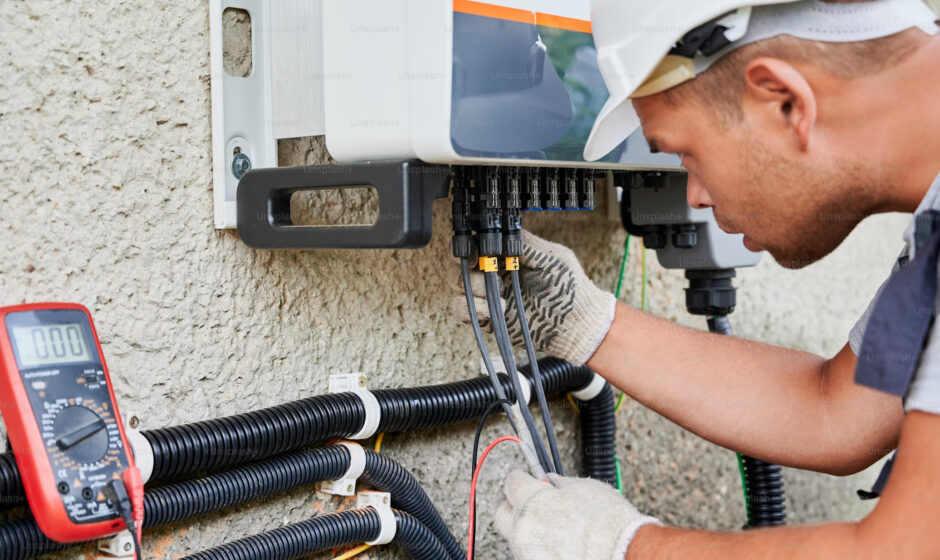Solar energy systems are incredibly efficient and eco-friendly. However, like any other technology, they can occasionally run into issues — especially when it comes to the inverter. The inverter acts as the brain of your solar setup, converting DC power from your panels into usable AC power for your home. When it malfunctions, your entire system can be affected.
Fortunately, many common inverter issues can be resolved without professional intervention. This guide will walk you through the most typical problems with solar on grid inverters, offer troubleshooting steps, and help you understand when it’s time to call an expert.
Understanding the Role of Your Solar Inverter
Before we jump into troubleshooting, it’s important to understand why your inverter is such a vital component of your solar power system. Without it, your system wouldn’t be able to power your home.
Solar on grid inverters ensure your solar system integrates seamlessly with your home’s electrical setup and the utility grid. They also provide real-time monitoring and safety features. So, if your inverter isn’t functioning properly, it’s more than a minor inconvenience—it’s a potential disruption to your home’s energy efficiency and safety.
No Power or Display: Is Your Inverter Dead?
One of the most common—and alarming—issues is a blank inverter display or no power at all. This can be unsettling, but don’t panic. The cause is often something simple.
Start by checking if there’s a tripped circuit breaker or blown fuse. In many cases, a simple reset is all that’s needed. If everything looks fine on your breaker panel, inspect the DC and AC isolators to ensure they’re switched on. These components may have been inadvertently turned off during maintenance or storms.
If you’ve tried all the basics and your solar on grid inverter still shows no signs of life, it may be a deeper internal fault or a power supply issue that requires professional diagnosis.
Red Lights or Fault Codes: Decoding the Message
Inverters are smart enough to communicate what’s wrong—if you know how to read the signs. Most solar on grid inverters have LED indicators or screen displays that show system status. Red or orange lights typically indicate a fault.
In addition to colored lights, many inverters display fault codes. Common ones include “Grid Fault,” “Isolation Fault,” or “Over Temperature.” Each of these has a different cause and fix. For instance, a “Grid Fault” may mean there’s a problem with voltage from the utility grid, not your solar system itself.
Always refer to your inverter’s manual for guidance on specific fault codes. The good news is that many of these issues are temporary and resolve themselves once the grid or environmental condition stabilizes.
Output Is Lower Than Expected: What’s Going On?
Another common issue homeowners report is that their solar system isn’t generating as much energy as expected. Before blaming the inverter, consider external factors like weather, shade, or seasonal sun angle.
However, if those are ruled out, your solar on grid inverter could be the culprit. Internal temperature issues, aging parts, or poor installation can reduce efficiency. Check the monitoring app or portal for performance logs and compare them against expected output values.
Sometimes, simply updating your inverter’s firmware or restarting the system can fix output irregularities. In cases of sustained low performance, schedule a service inspection.
Inverter Constantly Restarting or Shutting Down
If your inverter keeps turning off and on, you’re dealing with what’s known as “cycling.” This issue can interrupt your power supply and even damage your system if left unchecked.
The most frequent cause is grid voltage fluctuation. Solar on grid inverters are designed to shut down automatically when grid parameters go out of range, as a safety feature. Restarting occurs once stable conditions return. Other possible causes include overheating, which happens if the inverter is installed in direct sunlight or lacks proper ventilation.
You can try relocating your inverter or adding a protective shade structure to help it operate within its ideal temperature range. However, if cycling continues, have an installer check your inverter’s internal settings and surrounding conditions.
Monitoring Connection Issues: When Apps Stop Working
Modern solar on grid inverters often come with companion apps or web-based portals that allow real-time monitoring. When these stop syncing or showing data, it can be frustrating.
Usually, the problem lies in the Wi-Fi or communication settings. Begin by restarting your router and inverter. Check whether the inverter’s firmware is up to date, and ensure it’s still connected to the correct network. Weak signal strength can also be the issue—especially if the inverter is installed far from the router.
If everything appears fine and the problem persists, contacting the inverter’s technical support can help you reset your monitoring system remotely.
Regular Maintenance Can Prevent Most Issues
While it’s great to know how to troubleshoot, prevention is always better than repair. Make it a habit to check your inverter’s display or app at least once a week. Look out for fault messages or signs of unusual performance drops.
Keep the area around the inverter clean and well-ventilated. Remove dust and cobwebs gently, and ensure no rodents or insects are making their home nearby. Also, keep an eye on the inverter’s mounting to ensure it’s secure and dry. Following these small but consistent steps will extend the life of your solar on grid inverter.
When to Call a Professional
There’s a limit to DIY solar troubleshooting. If your inverter shows persistent error messages, has internal component damage, or completely fails despite your efforts, it’s time to bring in an expert.
Licensed technicians can test internal circuitry, check grid parameters, and perform firmware updates. They also have access to brand-specific tools and diagnostic software. Trying to fix high-voltage components yourself can be dangerous and may void your warranty.
So, trust your instincts. If the issue feels too complex or unfamiliar, get professional help to ensure your system continues running safely and efficiently.
Final Thoughts: Empowering Yourself with Knowledge
Troubleshooting your solar inverter doesn’t need to be daunting. With a bit of patience and awareness, most minor issues can be resolved at home. Solar on grid inverters are intelligent and often self-correcting, but staying informed and proactive ensures better performance and peace of mind.
By learning to interpret fault codes, checking basic power inputs, and maintaining good installation practices, you’re not just fixing problems — you’re maximizing your solar investment for years to come.



